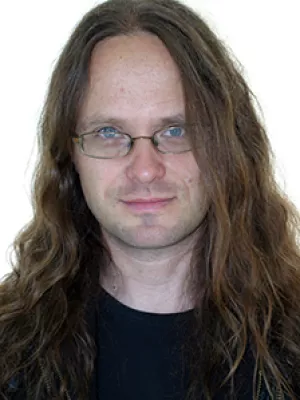
Stefan Östersjö
Senior lecturer

Participation and creation: approaches towards an eco-systemic understanding of artistic practice
Author
Summary, in English
This paper draws on artistic explorations of space, through analysis of projects set in the natural landscape, in a specific indoor site or at the threshold between the two. Specific attention is given to the artistic processes at play in the transformation of materials created/collected in the natural environment when shaped for presentation in an indoor location. What is the difference in the relation between being and becoming in this liminal space? According to Erwin Straus, the impetus to this process is the pathic moment of sensation, a moment which evolves in two dimensions: as an unfolding of the world and of the self (Straus 1965). Louis Schreel argues that in Deleuze and Guattari, artistic practice, activates a process in which “ the work ‘captures’ forces at work in the world and renders these sensible. Its effects are above all real and not merely imaginary: the image is not a mental given but a concrete, existing reality” (Schreel, 2014, p 100). Here, Deleuze distinguishes between the percept - landscape in the absence of man -and affect, the non-human becomings contained in the artwork. This paper wishes to unpack these processes through a study of two concrete instances of artistic practice in which either of the two authors took part.
The first example is ‘I play Northern Lights’, a piece created by Halla Steinunn Stefánsdóttir for ensemble Nordic Affect’s concert in the Northern Lights Hall in Harpa, Reykjavík. As an activation of space ‘I play Northern Lights’ was instigated from a curatorial point of view as a piece that would challenge the audience’s perception of the concert hall environment. It represents a performer’s active engagement with space: a method to break away from tradition and in so doing, exploring whether new aspects of the environment’s structure can be revealed.
The second example is taken from the work of the Landscape Quartet, a group of sound artists dedicated to the creation of ecological sound art which takes participation as point of departure, with the wish to align with “a broader set of cultural practices in which the imperial power of “the human” over the rest of the world is shifting in favour of what we might call a more eco-systemic engagement” (Hogg, 2013, p 1). But how can one understand the artistic processes at play in such participative forms of artistic practices? Can ecological sound art prompt different understandings of the relation between artist and artwork as well as between human and the natural environment?
The first example is ‘I play Northern Lights’, a piece created by Halla Steinunn Stefánsdóttir for ensemble Nordic Affect’s concert in the Northern Lights Hall in Harpa, Reykjavík. As an activation of space ‘I play Northern Lights’ was instigated from a curatorial point of view as a piece that would challenge the audience’s perception of the concert hall environment. It represents a performer’s active engagement with space: a method to break away from tradition and in so doing, exploring whether new aspects of the environment’s structure can be revealed.
The second example is taken from the work of the Landscape Quartet, a group of sound artists dedicated to the creation of ecological sound art which takes participation as point of departure, with the wish to align with “a broader set of cultural practices in which the imperial power of “the human” over the rest of the world is shifting in favour of what we might call a more eco-systemic engagement” (Hogg, 2013, p 1). But how can one understand the artistic processes at play in such participative forms of artistic practices? Can ecological sound art prompt different understandings of the relation between artist and artwork as well as between human and the natural environment?
Department/s
- Teachers (Malmö Academy of Music)
Publishing year
2017-06-30
Language
English
Document type
Conference paper
Topic
- Music
Keywords
- ecological sound art
- performance
Status
Published